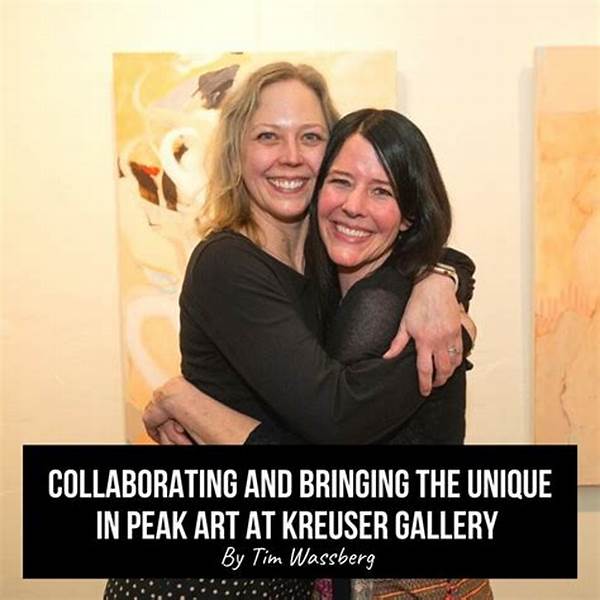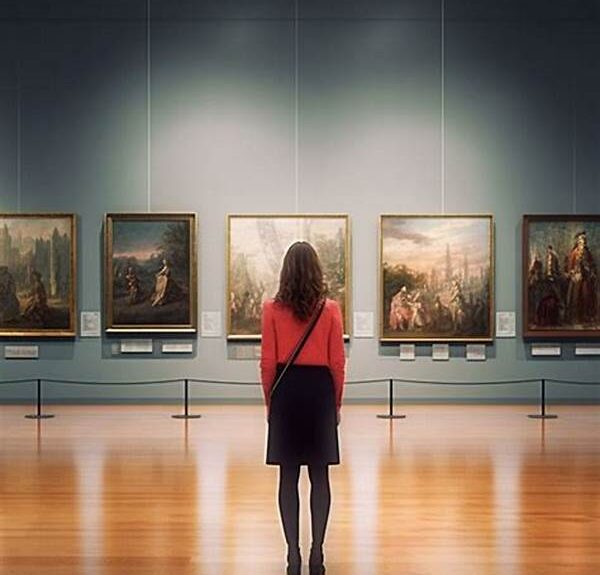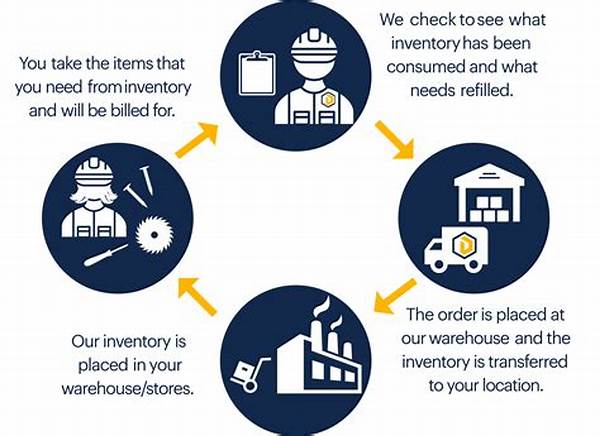Collaborating with art galleries offers artists a unique opportunity to broaden their reach and impact within the creative community. This partnership can serve as a vital step for emerging artists aiming to carve their niche in the art world, as well as for established creators seeking to refresh their portfolios. Engaging with galleries allows artists to showcase their work to new audiences, receive valuable feedback, and form meaningful connections with industry professionals. With galleries often acting as cultural hubs, collaborating with them can elevate an artist’s profile significantly. The synergy between artists and galleries fosters a dynamic environment that encourages innovation and artistic growth.
Read Now : Measuring Art Audience Engagement On Instagram
The Impact of Art Galleries on Artists’ Careers
Collaborating with art galleries can offer a range of benefits. Firstly, galleries provide artists with a physical space to display their work. This exposure is crucial in reaching audiences who may not be accessible through online platforms. Moreover, galleries often have established clientele who trust their taste and expertise, which can serve as a valuable endorsement for artists. Additionally, the process of collaborating with art galleries encourages artists to refine their work, considering presentation and audience engagement. This interaction instills a professional discipline, essential for any successful artistic career. Furthermore, galleries often engage in marketing efforts, promoting both the exhibition and the artist, thereby offering an extended reach that individual artists might struggle to achieve alone.
Artists who embark on the journey of collaborating with art galleries often find themselves part of a larger dialogue within the art community. This dialogue not only facilitates peer learning but also opens doors to collaborations with other artists and cultural institutions. Exhibitions become platforms for artists to express their creative narratives and connect with diverse audiences. Participating in gallery exhibitions is also a testament to the artist’s dedication and credibility in the art world. As artists navigate the complexities of these collaborations, they gain invaluable insights and experiences that contribute to their personal and professional growth.
Strategies for Successful Collaborations
1. Understanding Mutual Goals: When collaborating with art galleries, it’s essential to align objectives and ensure both parties benefit similarly. This mutual understanding builds a strong foundation for success.
2. Maintaining Open Communication: Consistent dialogue is key in collaborating with art galleries. This ensures clarity and allows for adjustments that may be required during the partnership.
3. Building Long-term Relationships: Collaborating with art galleries should be seen as an ongoing relationship rather than a one-time event. Investing in this connection can lead to recurring opportunities.
4. Offerings for Unique Experiences: When collaborating with art galleries, artists should propose unique exhibition ideas or special events. This can capture the interest of both the gallery and its visitors.
5. Respecting Artistic Vision: A successful collaboration respects the artist’s vision while aligning with the gallery’s brand. This balance is crucial in delivering a cohesive presentation that resonates with audiences.
Benefits of Gallery Partnerships
Collaborating with art galleries opens numerous avenues for artists to explore and develop their careers. By forming partnerships with galleries, artists gain access to a wealth of resources and industry knowledge that can be pivotal in their professional journey. Galleries often provide logistical support, helping with exhibition setup, marketing, and even sales. This enables artists to focus primarily on their creativity, knowing that the business aspects are being managed efficiently. For many artists, the association with a reputable gallery adds credibility to their portfolio, attracting further interest and opportunities.
These collaborations often result in artists forming lasting relationships with gallery owners, curators, and other artists. Networking through these platforms can lead to new commissions, collaborations, or even invitations to prestigious art fairs and exhibitions. By collaborating with art galleries, artists tap into a professional ecosystem that supports their artistic endeavours and propels their growth. The feedback and critique received from gallery representatives also serve as important learning tools for artists seeking to refine their craft and adapt to evolving art trends.
Challenges and Solutions in Art Gallery Collaborations
Collaborating with art galleries presents certain challenges, yet, with strategic planning, these can be effectively managed. The initial challenge often encountered is the selection of a suitable gallery that aligns with the artist’s aesthetic and professional vision. Conducting thorough research and attending gallery shows can aid in identifying potential matches. Once a connection is established, artists may face difficulties in negotiations related to exhibition terms, commissions, and marketing efforts. Clear, open communication is crucial in navigating these discussions to reach a mutually beneficial agreement.
Read Now : Create Nft From Your Artwork
Artists might also experience creative constraints when collaborating with art galleries due to the necessity of aligning their work with the gallery’s thematic focus or clientele preferences. It is vital for artists to find a balance that allows them to maintain their authentic voice while meeting the gallery’s requirements. Flexibility and compromise are key skills that will serve artists well in these scenarios. Furthermore, setting clear timelines and deliverables helps both the artist and the gallery manage expectations effectively, ensuring a smooth collaboration process.
Exploring New Markets through Gallery Collaborations
When artists consider collaborating with art galleries, they are often met with the potential to expand their market reach. Galleries serve as bridges to new audiences, offering exposure to collectors, art enthusiasts, and critics who might not have engaged with the artist’s work otherwise. By participating in gallery exhibitions, artists have the opportunity to display their creations in a professional setting, gaining visibility and credibility. Successful collaborations with art galleries can also lead to increased media attention and potential coverage in art publications, further broadening an artist’s reach.
Additionally, collaborating with art galleries can open doors to international opportunities. Many galleries have partnerships with institutions and collectors abroad, providing artists with the chance to have their work seen on a global scale. This exposure can be instrumental for artists seeking to establish an international presence. By aligning with galleries that have strong connections and reputation within the art industry, artists can strategically tap into new markets and expand their influence. Consequently, collaborating with art galleries becomes not just a professional move, but a strategic decision in maximizing an artist’s impact and outreach.
The Role of Curators in Gallery Collaborations
Curators play a crucial role in the dynamics of collaborating with art galleries. They provide not only an organizational backbone but also the creative vision that shapes exhibitions. Curators are often the link between artists and galleries, facilitating communication and ensuring that the artist’s work is presented in the best possible light. They help artists understand the gallery’s audience and suggest adjustments or enhancements to the body of work that might resonate more strongly with viewers. In this sense, collaborating with art galleries can be as much about learning and adaptation as it is about showcasing existing work.
Artists often find that curators become mentors through the collaboration process, offering guidance on career development and introducing them to networks of art professionals. This mentorship can be invaluable, providing artists with insights into the art world that go beyond immediate exhibition concerns. Collaborating with art galleries with the support of a curator can also enhance the educational value of an exhibition. A well-curated show enriches the audience’s experience, allowing them to engage more deeply with the artworks on display. By understanding and leveraging the role of curators, artists can ensure that their collaboration with galleries is fruitful and aligned with their career aspirations.
Summary of Gallery Collaborations
Collaborating with art galleries encapsulates a partnership that is rich in opportunity and learning. For artists, the appeal lies in the multitude of benefits that such collaborations can offer, from increased exposure and credibility to professional guidance. Galleries serve as conduits to broader audiences and provide the infrastructural support that can significantly ease the logistical burden on artists. By participating in gallery exhibitions, artists can showcase their creative vision to a discerning audience, often resulting in new opportunities and expanded networks.
For art galleries, collaborating with diverse and innovative artists brings fresh perspectives and creative energy, vital for maintaining relevance in a dynamic art market. This symbiotic relationship between artists and galleries thus becomes a catalyst for mutual growth and enrichment. By understanding the nuances of such collaborations, both parties are better equipped to optimize their interactions, ensuring a fulfilling and mutually rewarding partnership. Through effective communication, aligned goals, and a shared commitment to the art, collaborating with art galleries can indeed be a transformative experience for all involved.



